June 16, 2025 | 11:25 GMT +7
June 16, 2025 | 11:25 GMT +7
Hotline: 0913.378.918
June 16, 2025 | 11:25 GMT +7
Hotline: 0913.378.918
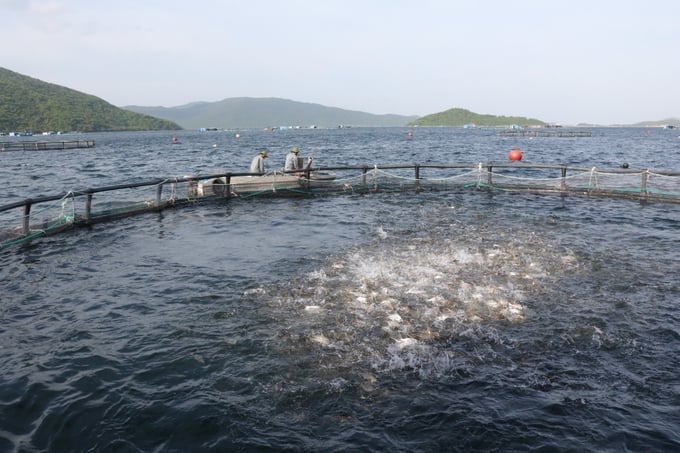
High-tech mariculture in Khanh Hoa province. Photo: Kim So.
According to Associate Professor Vo Van Nha, Director of the Research Institute for Aquaculture III, the Ministry of Agriculture and Rural Development's mariculture project and action plan have thoroughly outlined the roles of science and technology development and application in the growth of mariculture. Notably, the overarching objective of mariculture is to "reduce exploitation and increase aquaculture". Accordingly, science and technology, as well as the research on breeds, are crucial to accomplishing the aforementioned objective.
"Mariculture in Vietnam trace its origins to antiquity. It has since taken shape through national strategic policies, with a focus on the transition from traditional, rudimentary production mindset to an economic aquaculture mindset. This process requires science and technology as a crucial component to achieve the goal of reducing exploitation and increasing aquaculture, thereby enhancing value through the application of advanced and modern science and technology," Associate Professor Vo Van Nha added.

Research Institute for Aquaculture III conducting research on spiky sea cucumber breeds. Photo: Hoang Anh.
Regarding the breeding technology employed at the Research Institute for Aquaculture III, General Director Vo Van Nha shared that the breeding process for mariculture is currently divided into several groups; however, the underlying principles of research and selection are derived from practical market demands.
The first group of breeding process focuses on various fish species. Notably, the Research Institute for Aquaculture III has focused its efforts on the research of this group, and achieved significant results in producing and delivering commercial breeds to farmers in the South Central coastal region. The Institute has shifted its focus to researching barramundi since 1996, with gradually increasing degrees of success under the guidance of Dr. Truong Ha Phuong. As a result, the barramundi has been established as a high-quality mariculture species, featuring fast growth rate and good disease resistance.
The hybrid pearl grouper breed, which is a cross between giant grouper and brown-marbled grouper, was developed by Dr. Truong Quoc Thai, General Director of the Nha Trang Center for Mariculture Research and Development. Other successfully researched species include Humpback grouper, brown-marbled grouper, red grouper, cobia, and golden pompano.
The second group focuses on ornate rock lobster and scalloped spiny lobster, which are high-value economic species popular among farmers, businesses, and cooperatives. Lobster research has been conducted by scientists at the institute since the 1990s, with notable achievements including the technology of "bringing lobsters to land" for production in ponds, developed by Dr. Mai Duy Minh.
Despite difficulties in the research and breeding processes, scientists at the Institute have progressed through ten of the total twelve stages in lobster breeding. Namely, the Institute is undertaking a national-level project on the ornate rock lobster breed. The project is expected to conclude, with result evaluation, by the end of 2024. This level of progress represents a highly positive sign, wherein the ornate rock lobster breed is not commercially available worldwide.
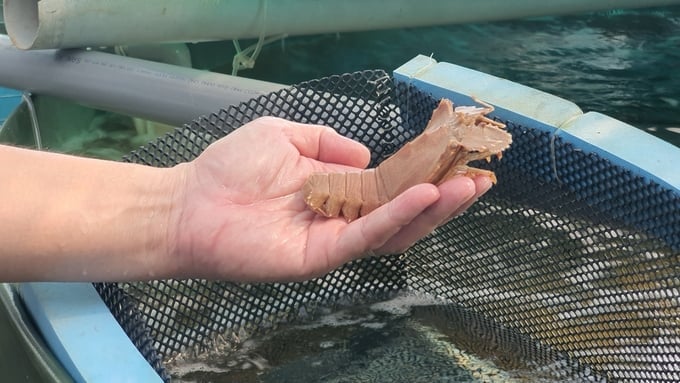
The Research Institute for Aquaculture III has successfully researched the slipper lobster breed. Photo: Kien Trung.
In 2021, the Institute successfully experimented with the commercial production technology for king crab through a project led by Dr. Nguyen Thi Thanh Thuy and her colleagues. Prior to the king crab project, Dr. Truong Quoc Thai and scientists from the Institute affirmed that they had mastered the broodstock breeding process and succeeded in producing artificial breeds of slipper lobster under the project "Research on exploitation and development of the genetic resource of flathead lobster (Thenus orientalis Lund, 1793)". These are key crustacean species intended for increased production to support mariculture in the near future.
Regarding the third group - mollusks, Associate Professor Vo Van Nha stated that the Institute has fully mastered the breeding technology for Pacific oyster, razor oyster, and spotted babylon snail. As a result, the Institute has provided a significant amount of mollusks to the market for commercial production. With the aim of contributing to the mariculture project, the Institute researched and mastered the breeding technology for abalone. Consequently, the Institute-researched abalone breed is currently commercially produced in several areas nationwide.
"Vietnam is home to more than 3,000 islands, and abalone will be the main species for mariculture in these areas. In addition to its economic value, abalone have a positive impact on environmental protection due to their characteristics," Associate Professor Vo Van Nha affirmed.
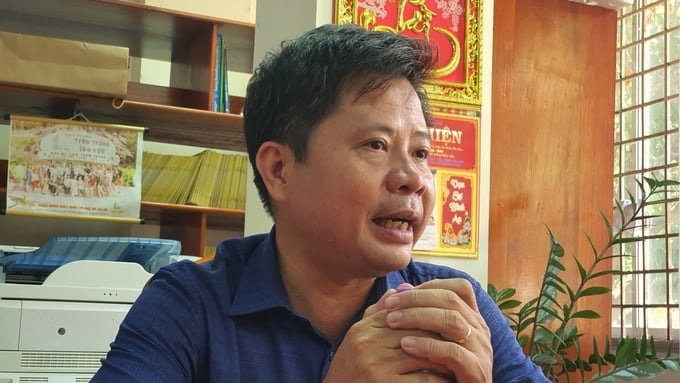
Dr. Truong Quoc Thai, Director of the Nha Trang Center for Mariculture Research and Development. Photo: Kien Trung.
With a clear focus on the economic and environmental values of seed production technology for mariculture, the Research Institute for Aquaculture III has successfully produced various breeds of sea cucumber species. Some exemplary species include the sandfish and black sea cucumber, developed by Dr. Nguyen Dinh Quang Duy; the black teatfish and pineapple sea cucumber developed by Dr. Nguyen Van Hung; among many others. According to the Institute's scientists, these sea cucumber breeds will be utilized in mariculture on islands in the near future, similar to pearl oysters.
The final group focus on various seaweed species: sea grape, red algae, laver, etc. In addition to economic value enhancement, product diversification, and supply chain establishment, the development of seaweed production can have an impact on the carbon credit market, thereby contributing to the development of multi-tiered, multi-value mariculture.
"The Research Institute for Aquaculture III will continue to insist on its strategy of researching species with high economic value based on market demands, with a focus on the export market. In addition to developing seed production technologies, the Institute will collaborate with business communities, cooperatives, and local residents to build mariculture supply chains, thereby contributing to the development of mariculture projects, and establishing a green and sustainable agricultural foundation," affirmed Associate Professor Vo Van Nha.
During an exchange with Vietnam Agriculture Newspaper, Associate Professor Vo Si Tuan (former Director of the Institute of Oceanography, Chairman of the Vietnam Mariculture Science and Technology Council) shared: "When looking at the development process of Vietnam's fisheries sector in retrospect, we must acknowledge the indispensable role of science and technology, with notable contributions evident in the research of shrimp, catfish, and many other aquaculture species."
In accordance with the Politburo's Resolution on marine economy, the Government approved the Project for the Development of the Mariculture Industry. Accordingly, the role of science and technology must be recognized in various aspects, such as ecology and oceanography, in the sustainable development of mariculture.
Firstly, current mariculture species in Vietnam can be divided into four main groups: Autotrophs, such as seaweed; filter feeders, such as oyster and mussel; Algae eaters, such as rabbitfish and pyramid top shell; and Carnivores, such as grouper and lobster. Each of these group has different fundamental requirements and environmental demands. Understanding their impacts on the environment and how they are affected in return is necessary for research and evaluation, thereby enabling the development of management strategies tailored to the ecological characteristics of each species.
For example, seaweed species are beneficial for the environment when used in mariculture due to their ability to absorb nutrients from the waste of other species, and sequester CO2 to combat greenhouse effects.
Conversely, they require large underwater spaces and extensive water surface areas. Moreover, they are affected by heavy metal contamination, sediment accumulation, turbidity, and predation by algae-eating organisms. Similarly, filter feeders, despite their outstanding advantages, also have significant interactions with the marine ecosystem. Namely, they can cause seabed degradation and alter benthic community structures. On the other hand, they are highly sensitive to heavy metal pollution and microbial contamination.
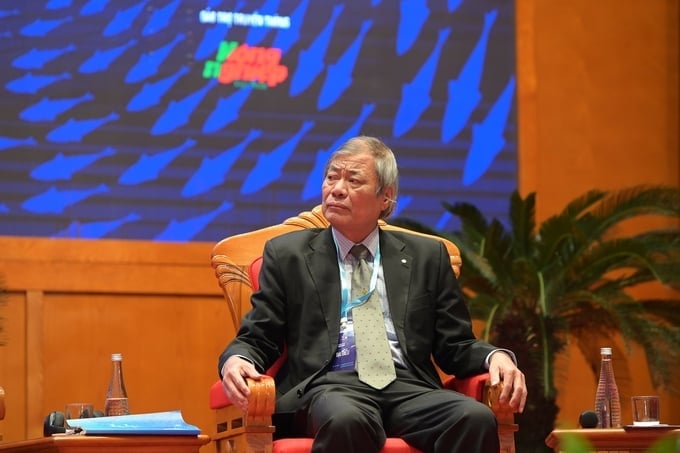
Associate Professor Vo Si Tuan. Photo: Kien Trung.
Secondly, research on marine ecology in mariculture areas support the planning and management of mariculture zones. Notably, an incident occured in Xuan Dai Bay, Phu Yen province, where a considerable amount of shrimp and fish died from oxygen deprivation over the span of a few hours, with an estimated loss of 70 billion Vietnamese dong. This incident is a typical example of marine ecology issues, the consequences of which stemming from long-term negative impacts on the marine environment. Consequently, it motivated us to make drastic adjustments, and implement scientific and technological solutions. From researching underwater nutrient transformation and water transport, to designing a farming cage system, an understanding of the marine ecology is crucial to the selection and management of mariculture species.
Additionally, the management of ecosystem-based fisheries has not received adequate attention and support from stakeholders. Namely, the role of habitats in maintaining ecosystem balance by retaining sediments and pollutants that affect the marine ecosystem has not been fully acknowledged. Notably, the success of seed production in the provinces of Khanh Hoa and Ninh Thuan can be attributed to the abundant presence of coral reefs in their marine areas. The reefs serve as crucial habitats, facilitating sustainable development in mariculture.
Another example includes Quang Ninh province, where the extensive coastal mangrove forests are directly responsible for the success of oyster farming. Accordingly, the mangrove forests retain pollutants and provide organic matter as food for oysters.
Translated by Nguyen Hai Long
![Turning wind and rain into action: [4] Bringing climate bulletins to remote and isolated areas](https://t.ex-cdn.com/nongnghiepmoitruong.vn/608w/files/linhnhp/2025/06/14/1152-z6704423696987_15fd32ffc26d590d204d520c9dac6786-nongnghiep-151141.jpg)
(VAN) The Vietnam Agriculture and Nature Newspaper interviewed Mr. Vu Thai Truong, Acting Head of Climate Change and Environment at UNDP Vietnam, to gain deeper insight into how climate bulletins are delivered to farmers.
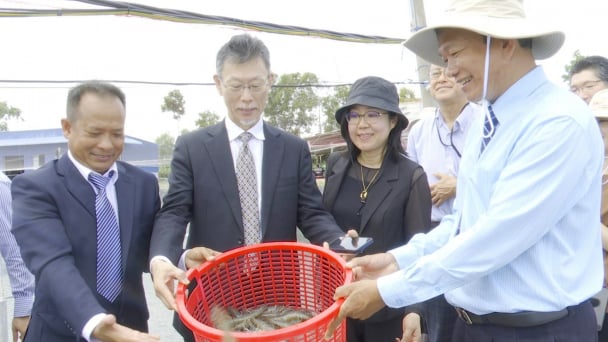
(VAN) In Tien Giang, a high-tech shrimp farm has developed a distinctive energy-saving farming model that has yielded promising results.
![Turning wind and rain into action: [3] 300.000 farmers benefit from agro-climatic bulletins](https://t.ex-cdn.com/nongnghiepmoitruong.vn/608w/files/news/2025/06/12/e5a48259d6a262fc3bb3-nongnghiep-125122.jpg)
(VAN) The agro-climatic bulletin has become a valuable tool for farmers in the Mekong Delta. After more than five years of implementation, the initiative is gradually being expanded nationwide.
![Turning wind and rain into action: [2] Providing forecasts to the people](https://t.ex-cdn.com/nongnghiepmoitruong.vn/608w/files/news/2025/06/12/e5a48259d6a262fc3bb3-nongnghiep-103927.jpg)
(VAN) In addition to improving the quality of hydrometeorological forecasts, putting forecast bulletins into practical use is crucial for production and disaster prevention.
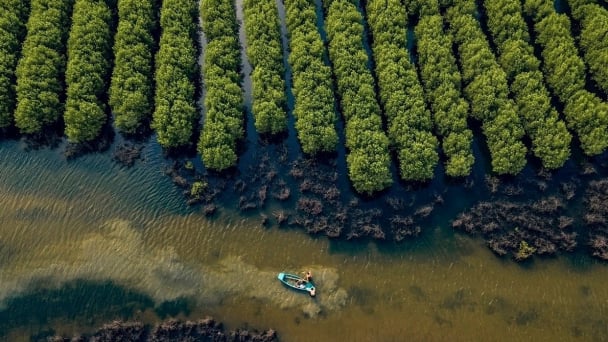
(VAN) Blue carbon is receiving attention for its rapid absorption capacity and vast potential. It represents a promising nature-based solution to respond to climate change.
/2025/06/11/3507-1-161904_583.jpg)
(VAN) Seagrass beds and coral reefs serve as 'cradles' that nurture life in the ocean depths, creating rich aquatic resources in Vietnamese waters.
![Turning wind and rain into action: [1] Forecasting for farmers](https://t.ex-cdn.com/nongnghiepmoitruong.vn/608w/files/news/2025/06/11/e5a48259d6a262fc3bb3-nongnghiep-111919.jpg)
(VAN) Weather is no longer just a matter of fate. Forecasts have now become an essential companion for farmers in every crop season.